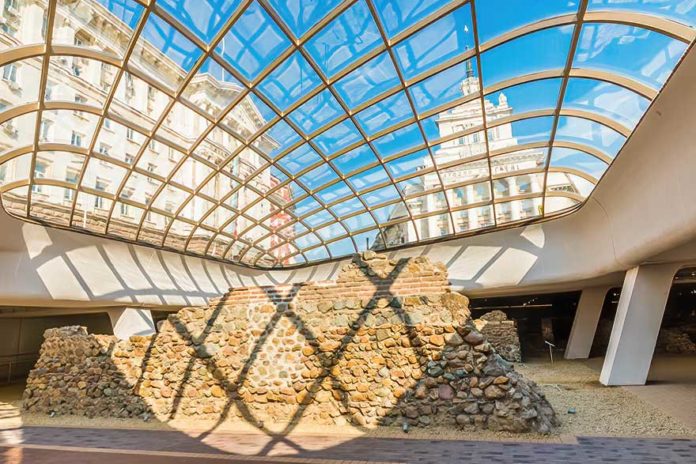Beneath the bustling streets of modern Sofia lies an ancient Roman city, frozen in time yet still whispering its stories. The Serdica Ancient Complex is not just a collection of ruins—it’s a gateway to the past, where Roman emperors walked, merchants traded, and history was made. With its well-preserved streets, villas, and fortifications, Serdica reveals how Sofia evolved from a Thracian settlement to a vital Roman stronghold and beyond.
A City at the Crossroads of Empires
Long before the Romans arrived, the Serdi tribe settled near Sofia’s mineral springs, giving the city its earliest name. But in 29 BC, the expanding Roman Empire claimed the region, transforming it into a flourishing town known as Ulpia Serdica.
Under Emperor Trajan, Serdica became a major administrative center, gaining fortifications, thermal baths, paved streets, and a grand forum. It grew into a prosperous city, attracting traders, artisans, and officials. However, its location made it vulnerable—Gothic and barbarian invasions frequently tested its strength. By the late 3rd century, Emperor Diocletian made Serdica the capital of Dacia Mediterranea, solidifying its importance.
“Serdica is My Rome” – The City of Emperors
Few cities in the Roman world held such favor with emperors, but Constantine the Great was especially fond of Serdica. He allegedly declared, “Serdica is my Rome”, and considered making it his imperial capital before choosing Byzantium (Constantinople).
His affection wasn’t unfounded. The city was a significant early Christian center, and in 311 AD, Emperor Galerius issued the Edict of Serdica here—granting Christianity legal status for the first time in the empire. This act paved the way for Constantine’s later Edict of Milan, shaping Europe’s religious future. Serdica even hosted a grand Christian council in 343 AD, which sought to unify early Christian doctrine.
The Serdica Ancient Complex Today
Walking through Serdica’s ruins today is like stepping into history. The heart of the site lies beneath Nezavisimost Square, where a glass dome shelters the Decumanus Maximus, the city’s main Roman street. Here, you can see remnants of:
- Ancient Roman homes and shops were where merchants once traded.
- Stone columns and inscriptions whisper tales of emperors and citizens.
- Bathhouses and mosaics show glimpses of Roman luxury.
Just steps away, another complex section—unearthed during Sofia’s metro expansion—reveals elite Roman residences. One house, the House of Felix, features well-preserved floor mosaics from over 1,600 years ago. These remnants tell stories of aristocrats who once enjoyed underfloor heating and private bathhouses.
A City That Never Stops Growing
Serdica’s legacy didn’t end with Rome. Over centuries, it transformed into Sredets under the Bulgarians before evolving into Sofia in the 14th century. Strolling through Serdica’s ancient streets, you can almost hear the chatter of Roman traders, the distant clang of blacksmiths, and the echoes of early Christian prayers. Sofia’s slogan, “Grows but does not age”, could not be more fitting. The Serdica Ancient Complex proves that beneath every modern metropolis lies a past waiting to be rediscovered.



